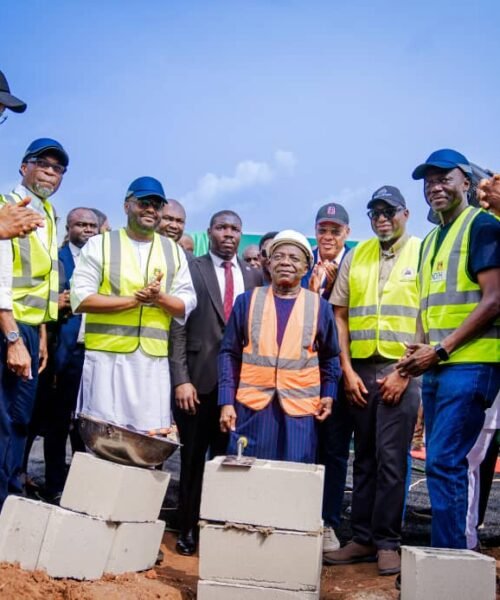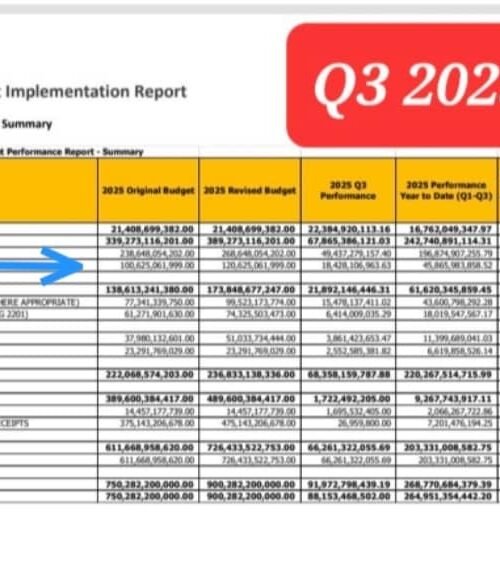Smart Corridors, Sky Economies, and Climate Resilience: Abia’s Trifecta for a Sustainable Tech-Driven Future
Phase 1: Governor Alex Otti’s Infrastructure Projects (2023–2025)
Governor Alex Otti’s administration has focused on revitalizing Abia State’s infrastructure since 2023, prioritizing road networks, flood control, strategic partnerships, aviation, and fiscal discipline. Key road projects include the reconstruction of Cemetery Market Road (Phases 1 and 2), Shalom Road, and Port Harcourt Road, which have improved urban-rural connectivity, reduced flooding, and boosted commerce in Aba. The dualization of Umuikaa Junction and rehabilitation of rural routes like the Leru-Ngodo Road have eased traffic congestion and linked remote communities to economic hubs. Drainage systems in Aba and Umuahia were overhauled through desilting and installation of reinforced concrete slabs, mitigating flood risks and enhancing pedestrian safety. Strategic collaborations with the federal government on projects like the Port Harcourt-Enugu Expressway and plans for the Aba-Owerri Road aim to strengthen interstate trade. The controversial Abia Airport project, launched in late 2024, seeks to improve regional connectivity, while the allocation of 84% of the N567.2 billion 2024 budget to capital projects underscores a commitment to long-term infrastructure development.
Phase 2: Futuristic Projects Built on Phase 1 Foundations
Building on Phase 1 achievements, Abia State can evolve into a hub of smart, sustainable infrastructure. The reconstructed road networks, such as Cemetery Market Road and Port Harcourt Road, could transition into intelligent corridors embedded with IoT sensors for real-time traffic management, autonomous vehicle lanes, and solar-powered EV charging stations. Port Harcourt Road’s rehabilitation could be expanded into a hybrid road-rail corridor, connecting Aba’s markets to Port Harcourt Port and Enugu’s industrial zones, while Umuikaa Junction’s dualized space might host drone delivery hubs to streamline e-commerce logistics. Phase 1’s drainage systems could integrate AI-powered flood prediction models, creating a “Flood Resilience Grid” that alerts communities via SMS during heavy rains. The desilted drains in Aba might be reimagined as linear parks with bioswales, combining flood control with green recreational spaces.

Strategic partnerships, such as the Aba-Owerri Road collaboration, could catalyze a cross-state “Tech Valley” focused on robotics and renewable energy manufacturing. Rural roads like Leru-Ngodo could anchor a decentralized agro-rail system, enabling farmers to transport goods to urban markets within two hours. The Abia Airport could evolve into a dual-purpose aerotropolis, integrating passenger travel with agricultural drone networks for crop monitoring and cold-storage logistics hubs for Aba-made exports. Financially, the credibility from Phase 1’s budget discipline could enable green bonds to fund solar microgrids along Shalom Road or public-private partnerships with tech giants like Google to build data centers powered by renewable energy.
Strategic Vision for Phase 2
The future of Abia’s infrastructure lies in merging physical projects with digital innovation, sustainability, and equitable growth. By embedding IoT and AI into roads and drainage systems, the state could create self-optimizing networks that reduce flooding by 30% and cut urban commute times by half. Renewable energy microgrids and circular economy principles—such as using recycled materials for road repairs—would ensure environmental resilience. Rural infrastructure like the Leru-Ngodo Road could spur agro-processing clusters, decentralizing wealth and reducing post-harvest losses. By 2030, these initiatives could position Aba as a tech manufacturing hub generating 50,000 jobs, while the Abia Airport handles 500,000 tons of cargo annually, driven by agro-exports. This phased approach transforms isolated projects into interconnected systems, aligning with Governor Otti’s vision of a “transformed Abia” while addressing past critiques through innovation-driven, inclusive growth.
Governor Alex Otti’s Phase 1 infrastructure projects—from reconstructed roads and flood-resistant drainage systems to the contentious Abia Airport—are not isolated achievements but strategic foundations for a far more ambitious vision. The rehabilitated Port Harcourt Road and Cemetery Market Road, now arteries of commerce, are designed to evolve into AI-managed “smart corridors” that integrate renewable energy grids and autonomous freight systems. Similarly, the newly launched airport, criticized as premature, is a deliberate precursor to an aerotropolis linking drone-driven agro-logistics with regional air trade. Even the desilted drains of Aba, seemingly mundane, are prototypes for a climate-resilient future, where predictive AI and bioswales turn flood zones into green urban havens. Together, these Phase 1 efforts lay the physical and digital groundwork for Phase 2: a seamless ecosystem where roads communicate with drones, airports double as data hubs, and cities adapt to climate shocks in real time. By 2030, this trifecta of smart mobility, aerial innovation, and green resilience could position Abia as a laboratory for sustainable development, proving that today’s asphalt and concrete are tomorrow’s platforms for inclusive, tech-powered growth.
Dr Chukwuemeka Ifegwu Eke writes from Yakubu Gowon University Nigeria







